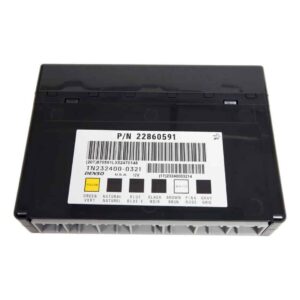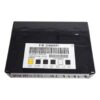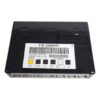Restore Your Truck’s Electrical System with a Plug-and-Play Solution
If your 2010 Chevrolet Avalanche 1500 is acting possessed—with flickering lights, malfunctioning power windows, or a security system that randomly prevents it from starting—you’re likely dealing with a failed Body Control Module (BCM). As the central command for your vehicle’s body electronics, a faulty BCM can cause a cascade of frustrating and unpredictable problems. I’ve seen it hundreds of times in the shop: what seems like a dozen separate issues all points back to this single component.
This isn’t just a replacement part; it’s a direct solution that saves you time and money. We offer a professional Cloning Service with your purchase. Simply send us your original BCM, and we will transfer all the critical vehicle-specific data—including VIN, mileage, and key information—to this replacement unit. The result? A module that is truly plug-and-play, eliminating the need for an expensive trip to the dealership for programming. We handle the technical work so you can get back on the road with confidence.
Case Study: A Tricky Diagnosis
A customer brought in a 2010 Tahoe with a classic case of electrical gremlins. The radio would turn off, the door locks would cycle while driving, and occasionally it wouldn’t start, flashing a ‘Service Theft Deterrent System’ message. They had already replaced the battery and checked the alternator. After hooking up the scan tool, I saw multiple communication loss codes (U-codes) with various modules. This is a tell-tale sign. Instead of chasing individual components, we went straight to the BCM. A quick check of the data stream showed erratic voltage readings originating from the module itself. Swapping in a cloned BCM solved all the issues instantly. It’s a great reminder that when multiple, unrelated electrical systems fail at once, the BCM should be your primary suspect.
Is Your GM Vehicle Showing These Symptoms?
- ✔ Intermittent or non-working power windows, door locks, or mirrors.
- ✔ Erratic interior or exterior lighting (lights staying on or not turning on).
- ✔ The security or anti-theft system light is on, preventing the engine from starting.
- ✔ False warnings on the instrument cluster (e.g., door ajar, service messages).
- ✔ Communication error codes, such as U0140, U0155, or other U-codes, stored in the system.
- ✔ Inconsistent operation of the heating and A/C blower motor.
Your Guide to a Smooth BCM Installation
Installing your cloned 2010 Avalanche 1500 BCM is a straightforward process. The key is our cloning service, which pre-loads all your vehicle’s data, making this a much simpler job than starting from scratch. For a 2010 Avalanche, the BCM is typically located under the driver’s side of the dashboard, near the steering column.
- Safety First: Always disconnect the negative terminal from your vehicle’s battery before working on any electronic components.
- Locate the BCM: On your Avalanche or similar GM truck/SUV, find the BCM mounted to a bracket under the driver-side dash. You may need to remove a lower dash panel for access.
- Disconnect and Remove: Carefully unplug the electrical connectors. Most have a locking tab that needs to be pressed or lifted. Once disconnected, unbolt the module from its mounting bracket.
- Install the New Module: Mount your new, cloned BCM in the same location and securely reconnect all electrical harnesses. Ensure they click into place.
- Reconnect Battery: Reattach the negative battery terminal.
- Test and Verify: Start the vehicle and test all body functions: power windows, locks, radio, wipers, and lights to confirm proper operation.
- Post-Installation Checks: In some cases, a post-installation procedure like an airbag system sync or brake pedal relearn may be needed. See our FAQ for details.
Verified Vehicle Compatibility
This Body Control Module is a direct fit for a wide range of General Motors vehicles. Please match your original part number to the list below or verify fitment by your specific model and year. This unit replaces part numbers: 10382479, 15093910, 15276271, 15299986, 15819552, 15828601, 15837419, 15872388, 15872421, 15880684, 15921352, 15921353, 15948438, 15948439, 20815898, 20839063, 20864767, 20864768, 20921435, 20921436, 20935349, 22860591, 25826124, 25826125, 25847588, 25847589, 25892622, 25910474, 25934762, 25934763, 95151084.
Note: Some models have specific ID requirements. Please verify the part number from your original module.
Frequently Asked Questions
What is the ‘Cloning Service’ and why do I need it?
Cloning is a process where we transfer the exact software and vehicle-specific data (like VIN and security information) from your old BCM to the replacement one. This makes the new module a perfect electronic match for your vehicle, allowing you to install it without requiring expensive dealer programming.
Do I need to send my original BCM to you?
Yes. For the cloning service to work, we need your original module to extract the data. We will return your original module along with the newly programmed replacement unit.
Will this fix my ‘Service Theft Deterrent System’ warning?
In many cases, yes. A failing BCM is a very common cause of this warning and the associated no-start condition. By cloning your original key data, this module restores proper communication and should resolve the issue.
What are the post-installation procedures you mentioned?
For some vehicles, additional steps may be needed. If your airbag light is on after installation, a professional scan tool is required to perform the ‘Setup SDM Primary Key in BCM’ procedure. A ‘Brake Pedal Position Relearn’ might also be necessary for correct brake light and traction control operation. These are not always required but are good to be aware of.
Is this a difficult part for a DIY mechanic to replace?
The physical replacement is generally straightforward for someone comfortable working under a dashboard. It typically involves removing a trim panel and a few bolts. Our cloning service eliminates the most difficult part—the programming—making it a very manageable DIY job.



